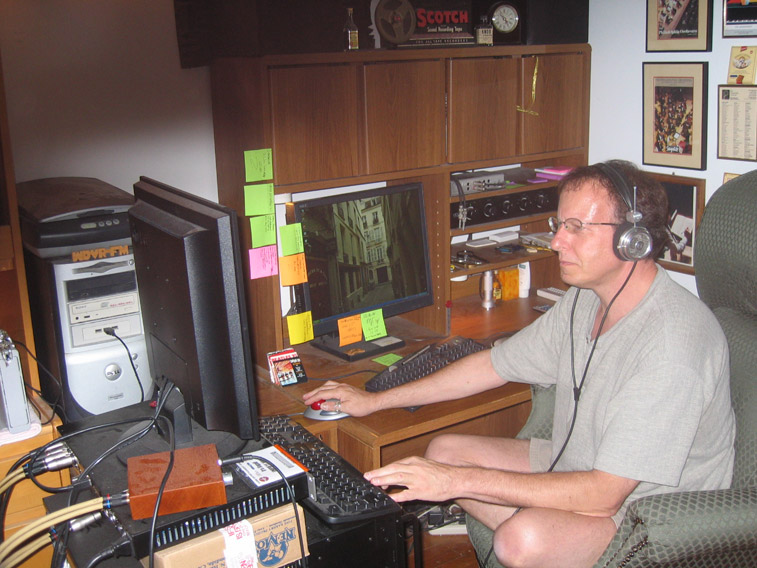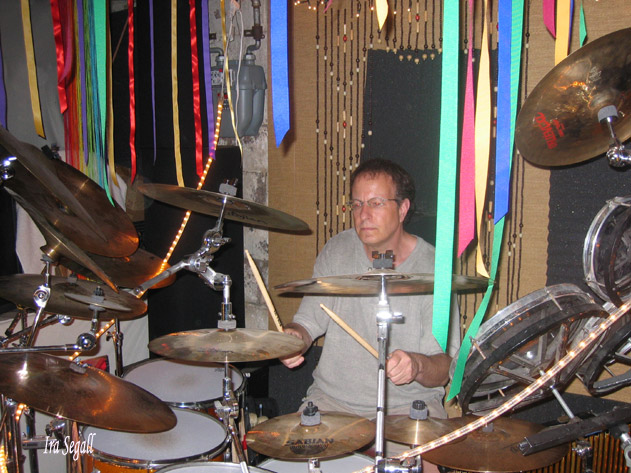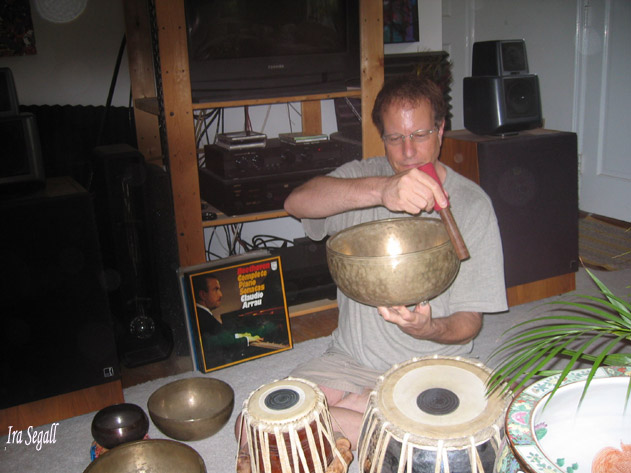The Art of Minimal Mic’ing


Modern trends in audio recording tend toward the complex. Studio recordings typically utilize at least one microphone for each instrument, and the musicians themselves are not infrequently separated in both time and space. The recording engineer combines the various tracks, adjusting their relative volumes (and perhaps phase) to achieve the desired result – a multi-mono representation in artificial stereophonic sound. If the artists were unable to produce a “perfect” take, the engineer will (electronically) splice together portions of different takes to produce a complete song. Even in “live” recordings it is common to use a multiplicity of microphones, the final product resulting from the after-the-fact combining of their outputs. It is thus hardly surprising that studio recordings differ so much from concert performances. While complex, multi-mic’ed recordings have become the accepted norm, there are a number of individuals who are dissatisfied with the results. Ira Norman Segall is one such person.

I began this interview at Ira’s home in the suburbs of Philadelphia. Ira lives on a tree-lined street of old but beautifully maintained stone houses. His home reflects both his spirituality and his artistic nature – from the subtle aroma of incense, to his own paintings on the walls, to the various and assorted artifacts, I felt comfortable and relaxed as Ira shared with me bits of his life, and how Unipheye Music came into being.
Ira’s father, Irving Segall, (www.irvingsegall.com) was a thirty-one season violist with the Philadelphia Orchestra, so Ira grew up surrounded by music. As Ira expresses it, “I know the sound of wood.” As is the case for many recording engineers, Ira’s first recordings were of the local basement bands he played in, with which he used minimal mic’ing. While this may seem to have been an act of prescience on his part, Ira unashamedly acknowledges that it was actually born of economics; as a young man in his mid-teens, he simply couldn’t afford more than two microphones! With the passage of time Ira’s career took shape, with invaluable experience gained through his participation in the recording (for radio broadcast and archive) of the Philadelphia Orchestra, both at their home at the Academy of Music in Philadelphia, and in Saratoga Springs, NY during the summer months. Although for the Orchestra more complex multi-mic’ing was used, Ira felt that the sound was superior on the projects that the facility did for other, smaller ensembles, which often utilized minimal mic’ing. Ira believed in his heart that the Orchestra recordings might have sounded better with fewer microphones. For his own projects outside the Orchestra, Ira always continued to use only two microphones. Ira continued to record projects at night, and feels that his work designing high-end music listening systems, and more importantly, his learning to critically set them up with tape measure, bubble-level and room acoustics, were an integral part of his learning how to produce natural-sounding recordings. His goal in starting Unipheye Music was to capture truly incredible players (for the immediate future, chamber music, jazz and world music) – the energy and passion of their performance – the tonal brilliance of their instruments – and to thus provide music lovers with an intimate, involving listening experience. By doing so, Ira hopes to bring people a bit closer to the gift he felt he grew up with – a major symphony orchestra right at his doorstep. According to Ira, Unipheye Music’s most valuable asset is the quality of artist to whom he has unprecedented access – a result of his father’s friends and former colleagues – representing a level of talent unavailable to most labels.
While elements of artistry contribute to all recording projects, in no case is this more true than with minimally mic’ed recordings; any problems with the recording can’t be fixed after the fact. I should point out that as is true for many things in life, minimally mic’ed recordings are not as easy or simple as casual observation might suggest. A visit to Ira’s studios gave me a glimpse into how the magic comes about. While microphone placement is important in any recording, this is especially true for those which are minimally mic’ed. Because the same microphones are used for all the instruments, placement of the musicians/instruments – relative to one another and to the mics – is critical, as is the position of the mics within the room. In Ira’s studio the optimal positioning of the musicians was indicated by numerous markings on his studio floor. Ira explained that the approximate positions were determined through careful measurements of the relevant distances, while the fine tuning was done by trial-and-error listening, done in collaboration with Ira’s friend Adam Sankin, a recording engineer based in California. Ira played for me excerpts of a test recording of the highly acclaimed Johannes String Quartet performing the Mendelssohn Op. 44 D Major quartet. This was without question one of the finest recordings I have ever heard. Instruments had a more natural tonal quality than I thought possible, and the sense of space they conveyed was astonishingly realistic – a pleasant change form the artificial etched outlines we have become accustomed to. I also heard a recording by tabla expressionist Siddharth Mehta (who is Ira’s tabla instructor) playing the hand drums of India; the recording captured both the attack of the percussion and its deep, rich harmonics, as well as the positioning of the artist (who played while sitting on the floor).


Ira expects the first discs to be commercially available by this winter’s end. Acoustic Sounds has expressed interest in distributing Unipheye Music recordings, amongst other sources. I eagerly await their release.
UNIPHEYE MUSIC, LLC
P.O. Box 30148
Elkins Park, Pennsylvania 19027
U.S.A.
Phone: 215-635-3499
www.unipheyemusic.com
info@unipheyemusic.com

![]()
Don’t forget to bookmark us! (CTRL-SHFT-D)
Stereo Times Masthead
Publisher/Founder
Clement Perry
Editor
Dave Thomas
Senior Editors
Frank Alles, Mike Girardi, Russell Lichter, Terry London, Moreno Mitchell, Paul Szabady, Bill Wells, Mike Wright, and Stephen Yan,
Current Contributors
David Abramson, Tim Barrall, Dave Allison, Ron Cook, Lewis Dardick, John Hoffman, Dan Secula, Don Shaulis, Greg Simmons, Eric Teh, Greg Voth, Richard Willie, Ed Van Winkle, Rob Dockery, Richard Doran, and Daveed Turek
Site Management Clement Perry
Ad Designer: Martin Perry





Be the first to comment on: The Art of Minimal Mic’ing